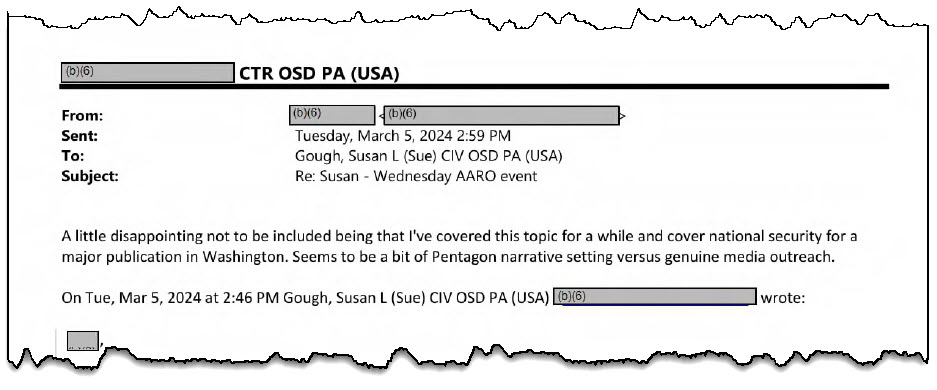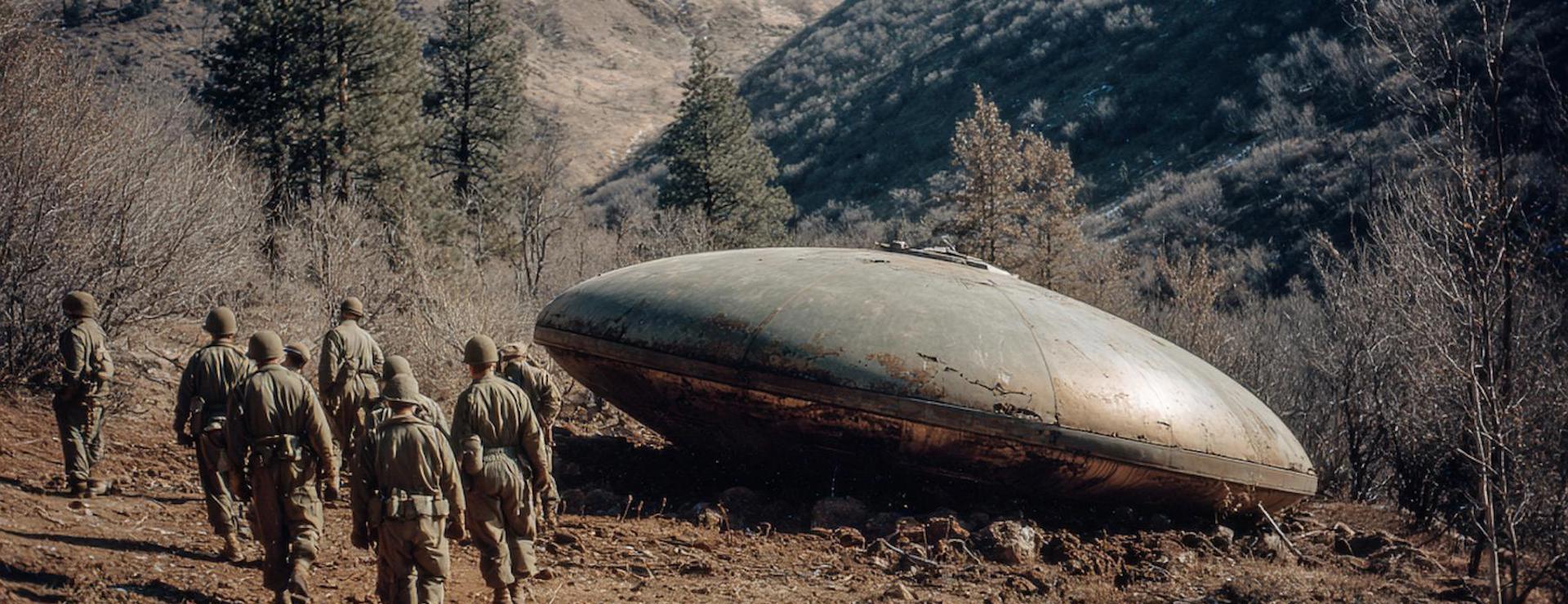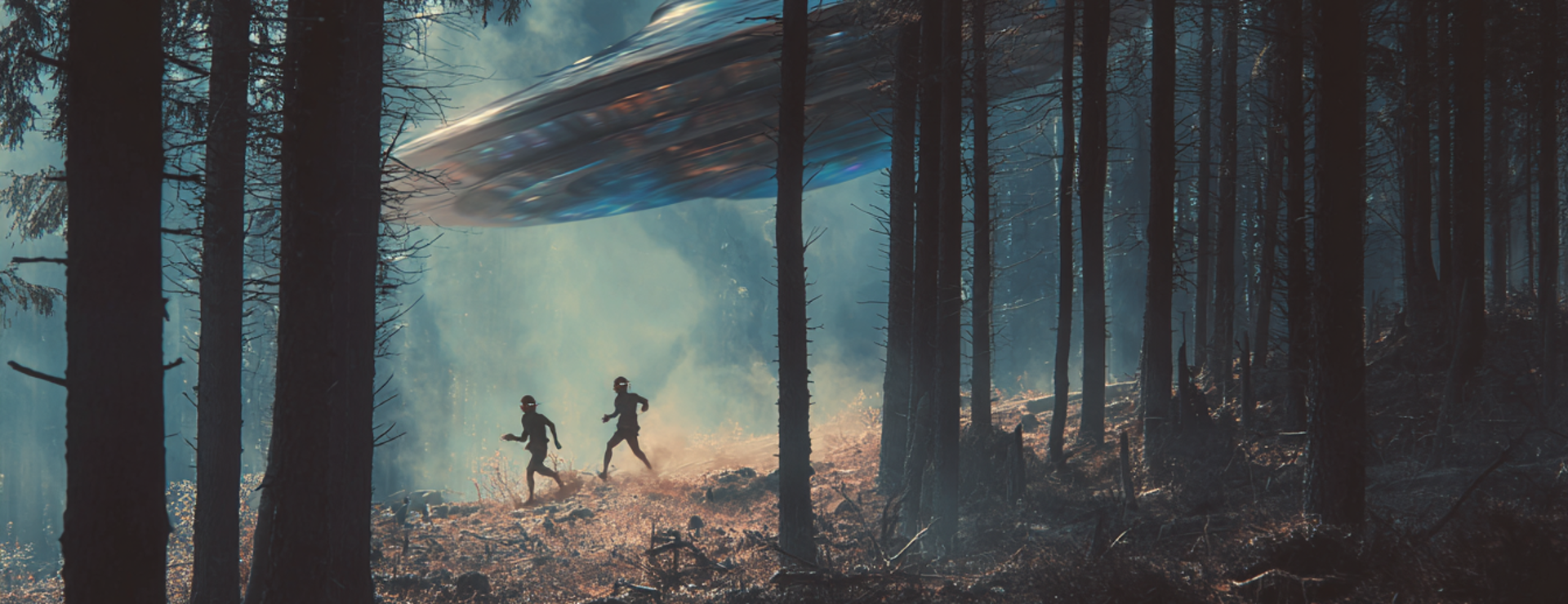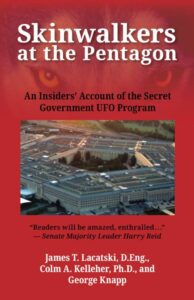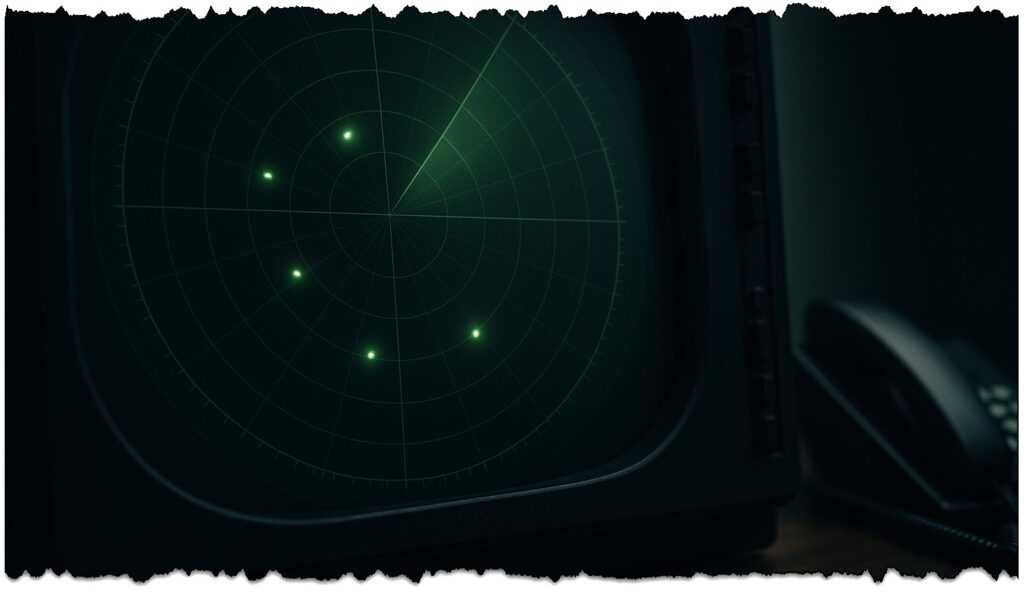Background
Welcome to the FBI Files on Journalists and their Periodicals archive on The Black Vault. This unique collection offers an intriguing glimpse into the interactions and investigations conducted by the FBI involving prominent journalists and their respective newspapers and periodicals. Here, you will find an array of declassified documents that shed light on the complex relationship between the media and government intelligence during various periods in history. These files not only offer insights into the careers and personal lives of the journalists but also reflect the broader socio-political context in which they operated.
As you explore this archive, you will encounter files from a range of sources, detailing investigations, surveillance, and correspondences that paint a vivid picture of the journalistic landscape as viewed through the lens of the FBI. This collection is an invaluable resource for historians, researchers, and anyone interested in the intersection of media, politics, and intelligence. It provides a fascinating look at how journalists and their work were perceived and handled by government agencies, offering a deeper understanding of the dynamics between press freedom and national security.
Document Archive
Anderson, Jack – [1,518 Pages, 130 MB] – FBI’s “The Vault” Release
Anderson, Jack – [1,131 Pages, 86.7 MB] – FBI Release #2 resulting from FOIA Request 1356764-000.
Anderson, Jack – [1,323 Pages, 87.6 MB] – FBI Release #3 resulting from FOIA Request 1356764-001.This case was a bit confusing. The page count from the release on the FBI’s “Vault” differs by hundreds of pages against the file they sent me on CD-ROM. Why the discrepancy? On 12/23/16, I filed a FOIA for additional records, to see where the confusion might be at and now I received an estimate that there are an additional 1,598 pages that I can buy for $55.To add to the confusion, on December 1, 2017, I received another response CD-ROM with 1,323 pages on it. I was under the impression the case was closed since I did not pay for the 1,598 pages they quoted me for above. So what was this release?Jack Northman Anderson (October 19, 1922 – December 17, 2005) was an American newspaper columnist, syndicated by United Features Syndicate, considered one of the fathers of modern investigative journalism. Anderson won the 1972 Pulitzer Prize for National Reporting for his investigation on secret American policy decision-making between the United States and Pakistan during the Indo-Pakistani War of 1971. In addition to his newspaper career, Anderson also had a national radio show on the Mutual Broadcasting System, acted as Washington bureau chief of Parade magazine, and was a commentator on ABC-TV’s Good Morning America for nine years.
Austin, Louis – FBI Release #1 – [96 Pages, 12.8MB] –
Austin, Louis – FBI Release #2 – [17 Pages, 8.5MB] – Louis Austin (1898-1971) was an African American journalist, leader and social activist. Austin purchased The Carolina Times in 1927 and transformed it into an institution that aided African Americans in their fight for freedom and equality in North Carolina. He used a new approach to Civil Rights issues in Durham, incorporating lower and middle class blacks, unlike the moderate, accommodationist approach of the black elite in Durham during this time. Austin’s unusual strategy of advocating for the majority of blacks to have a voice in society succeeded in galvanizing a broader segment of the African American community in Durham to act for social change. Austin’s approach to black activism helped lay the groundwork for the modern Civil Rights Movement in Durham in the late 1950s and 1960s, which also encouraged lower-income blacks to become politically active. His strategies—which were once considered too radical by his peers—allowed Austin to maintain his influence in Durham well into the 1950s and 1960s. In doing so, Austin created a lasting impact for Durham.
Baldwin, Hanson – FBI Release #1 – [847 Pages, 65.7MB]
Baldwin, Hanson – FBI Release #2 – [69 Pages, 51MB] – Hanson Weightman Baldwin (March 22, 1903 – November 13, 1991) was the long-time military editor of The New York Times. He won a Pulitzer Prize “for his coverage of the early days of World War II”. He wrote or edited numerous books on military topics.
Barrett, Wayne – [5 Pages, 1.0MB] – Wayne Barrett (July 11, 1945 – January 19, 2017) was an American journalist. He was an investigative reporter and senior editor for The Village Voice for 37 years. Barrett was a Fellow with The Nation Institute and contributor to Newsweek. He held degrees from Saint Joseph’s University and the Columbia University Graduate School of Journalism, where he served on the adjunct faculty for over thirty years. Barrett authored many articles and books about politicians, especially New York City figures such as Ed Koch, Donald Trump, and Rudy Giuliani. He was a major interviewee in Kevin Keating’s 2006 documentary Giuliani Time.
Brennan, Raymond Ruddy – [17 Pages, 5.4MB] – Raymond Ruddy “Ray” Brennan (1907-1972) was a prominent reporter for the Chicago Sun-Times, known for his fast-thinking and dynamic reporting style. He began his career in journalism with the Associated Press in Chicago, where he made a name for himself by obtaining an exclusive on the escape of gangster John Dillinger from the Crown Point jail. Brennan’s most notable work came during his time at the Sun-Times, where he was instrumental in covering high-profile criminal trials across the United States. His writing style and ability to immerse himself in the world of crime reporting made him a legend in the field. Brennan’s career also included ghostwriting Roger Touhy’s autobiography, “The Stolen Years,” which played a role in Touhy’s parole from prison. Known for his likable personality, despite living a life surrounded by gangsters and crime, Brennan passed away in 1972 due to cancer, a condition likely exacerbated by his constant smoking.
Breslin, James – [57 Pages, 13MB] – James Earle Breslin (October 17, 1928 – March 19, 2017) was an American journalist and author. Until the time of his death, he wrote a column for the New York Daily News Sunday edition. He wrote numerous novels, and columns of his appeared regularly in various newspapers in his hometown of New York City. He served as a regular columnist for the Long Island newspaper Newsday until his retirement on November 2, 2004, though he still published occasional pieces for the paper. He was known for his newspaper columns which offered a sympathetic viewpoint of the working-class people of New York City, and was awarded the 1986 Pulitzer Prize for Commentary “for columns which consistently champion ordinary citizens”.
Considine, Bob – [54 Pages, 33MB] – Robert Bernard Considine, known as Bob Considine (November 4, 1906 – September 25, 1975), was an American journalist, author, and commentator. He is best known as the co-author of Thirty Seconds Over Tokyo and The Babe Ruth Story. Additional records may exist – which have been requested. This page will be updated, should any new documents be released.
Crile, George – FBI Release #1 – [18 Pages, 4.6MB]
Crile, George – FBI Release #2 – [8 Pages, 1.8MB] (Cross References)
Crile, George – NARA Release #1 – [14 Pages, 0.9MB]George Crile III (March 5, 1945 – May 15, 2006) was an American journalist most closely associated with his three decades of work at CBS News. Crile was both a producer and reporter for CBS. His career with the company spanned three decades until his death in 2006. Before joining CBS at the age of 31, Crile was Washington Editor of Harper’s Magazine. In addition to Harper’s, his articles were published in The Washington Monthly, New Times, The Washington Post Outlook Section and The New York Times.
Cronkite, Walter – [72 Pages, 3.85 MB] – Walter Leland Cronkite Walter Leland Cronkite (1916-2009), famous newscaster and journalist, worked for CBS News for five decades. Although the FBI did not investigate Cronkite, his name does appear in its files, usually in passing reference to his contact with an individual under FBI investigation or due to his professional contacts with the Bureau. These excerpts range from 1956 to 2000.
Gold, Victor – [8 Pages, 4.5MB] – Victor “Vic” Gold (September 25, 1928 – June 5, 2017) was an American journalist, author, and Republican political consultant. Gold began his career as a lawyer and advisor to the Democratic Party in Alabama before switching to the Republican Party. He worked as deputy press secretary for Senator Barry Goldwater during the 1964 presidential election and press secretary for Vice President Spiro T. Agnew from 1970 to 1973. Gold left politics for a time to work as a writer and political commentator, returning in 1979 as a speechwriter to the presidential campaign of George H. W. Bush and was an advisor to Bush’s 1988 and 1992 campaigns. Later in life, Gold split with the Republicans over issues including the 2003 invasion of Iraq and formally left the party in 2016.
Graham, Philip Leslie – [27 Pages, 15.4 MB] – Philip Leslie “Phil” Graham (July 18, 1915 – August 3, 1963) was an American newspaper publisher. He was the publisher (from 1946 until his death) and co-owner (from 1948) of The Washington Post.
He was married to Katharine Graham, the daughter of Eugene Meyer, the previous owner of The Washington Post.
Griffith, Sanford – [HQ-1 File 21.08MB | NYC-1 File 35.14M ] – [ 520 Total Pages ] – Sanford Griffith was born in 1893. He studied at Heidelberg University but on the outbreak of the First World War he fled to France and joined the French Army. In 1918 he transferred to the US Army. Griffith reached the rank of major and was involved in interrogating German prisoners. In 1940 Griffith was recruited by William Stephenson, the head of British Security Coordination (BSC). He now established his company Market Analysts Incorporated and was commissioned to carry out polls for the Committee to Defend America by Aiding the Allies. The organisation was headed by William Allen White who gave an interview to the Chicago Daily News about his intentions: “Here is a life and death struggle for every principle we cherish in America: For freedom of speech, of religion, of the ballot and of every freedom that upholds the dignity of the human spirit… Here all the rights that common man has fought for during a thousand years are menaced… The time has come when we must throw into the scales the entire moral and economic weight of the United States on the side of the free peoples of Western Europe who are fighting the battle for a civilized way of life.” It was not long before White’s organization had 300 chapters nationwide.
Halle, Kay – [77 Pages, 50.7MB]
Halle, Kay – [28 Pages, 13.5MB] – Kay Halle, born in 1903 in Cleveland, Ohio, was a notable American journalist, author, and broadcaster renowned for her multifaceted career and social influence. Her journalism career blossomed in the 1930s, where she worked as a radio commentator and columnist, gaining prominence for her incisive reporting and interviews with significant figures of the era. Halle was also a literary figure, authoring several books, including biographies and collections of humor. Beyond her professional achievements, she was a celebrated hostess in Washington, D.C., known for her salons that gathered politicians, journalists, and celebrities. Her social circle included Presidents, diplomats, and notable figures like Winston Churchill. Halle’s life reflected a blend of journalistic integrity, literary talent, and a unique knack for connecting influential personalities, making her a significant figure in mid-20th-century American media and society.
Hastings, Michael – [21 Pages, 1.5 MB] – Michael M. Hastings (1980-2013), was a journalist and author. This release of a 6/11/2012 FBI document and its attachments (21 pages total) consists of the only material found in FBI records mentioning Hastings. No FBI records indicate an investigative interest in Hastings.The National Security Agency will neither confirm nor deny records related to Hastings — NSA Denial Letter
Hillman Periodicals – [77 Pages, 50.7MB] – Hillman Periodicals, Inc. was an American magazine and comic book publishing company founded in 1938 by Alex L. Hillman, a former New York City book publisher. It is best known for its true confession and true crime magazines; for the long-running general-interest magazine Pageant; and for comic books including Air Fighters Comics and its successor Airboy Comics, which launched the popular characters Airboy and The Heap.
Inside Story Magazine – [ 23 Pages, 55 MB ] – Take a look back in time when the public would assist the FBI with news tips and leads. Throughout the 1950s and 1960s, there was a periodical known as “Inside Story”. In it, were news articles, some of which, concerning the FBI. This file (obtained from the National Archives), offers the articles and corresponding letters the FBI received, clipped from this magazine.
Jennings, Peter – [61 Pages, 28.4MB] – Peter Charles Archibald Ewart Jennings, CM (July 29, 1938 – August 7, 2005) was a Canadian-American journalist and news anchor. He was the sole anchor of ABC World News Tonight from 1983 until his death in 2005 of complications from lung cancer. A high-school dropout, he transformed himself into one of American television’s most prominent journalists.
Kaplow, Herbert – [17 Pages, 2.91 MB] – Herbert Elias “Herb” Kaplow (February 2, 1927 – July 27, 2013) was an American television news correspondent. His main focus was reporting out of Washington, D.C., covering presidential campaigns and those who were elected.
Krassner, Paul – FBI Release #1 – [362 Pages, 161MB]
Krassner, Paul – FBI Release #2 – [193 Pages, 129MB] – Paul Krassner (1932-2019) was an influential American satirist, journalist, and activist, best known as the founder and editor of The Realist, a groundbreaking satirical magazine that played a pivotal role in the countercultural movements of the 1960s. Blending humor with pointed social critique, Krassner tackled controversial topics, challenging political norms and censorship. He was also a key figure in the Yippie movement and co-founded the Youth International Party, using satire and activism to oppose war and support civil liberties. His irreverent writing style and fearless approach to taboo subjects solidified his legacy as a provocateur who shaped alternative journalism.
Morley, Felix – [5 Pages, 1.5MB] – Felix Muskett Morley (1894-1982) was a distinguished American journalist, editor, and educator known for his contributions to political commentary and journalism. He served as the editor of the Washington Post from 1933 to 1940, during which the newspaper earned its first Pulitzer Prize for Public Service in 1936. A staunch advocate for individual liberties and limited government, Morley was also a prominent voice in the American conservative movement. He authored several influential books and essays, often emphasizing the importance of federalism and constitutionalism. In addition to his editorial work, Morley was an accomplished academic, teaching at Haverford College and later becoming the president of the institution. His legacy continues to be honored for his commitment to journalistic integrity and principled political thought.
Pearl, Daniel – [21 Pages, 8.2MB] – Daniel Pearl (October 10, 1963 – February 1, 2002) was a journalist for the Wall Street Journal with American and Israeli citizenship. He was kidnapped by Pakistani terrorists and later murdered in Pakistan. Pearl was kidnapped while working as the South Asia Bureau Chief of The Wall Street Journal, based in Mumbai, India. He had gone to Pakistan as part of an investigation into the alleged links between British citizen Richard Reid (known as the “shoe bomber”) and Al-Qaeda. Pearl was killed by his captors. In July 2002, Ahmed Omar Saeed Sheikh, a British national of Pakistani origin, was sentenced to death by hanging for Pearl’s abduction and murder. In March 2007, at a closed military hearing in Guantánamo Bay, Khalid Sheikh Mohammed, a member of Al-Qaeda, claimed that he had personally beheaded Pearl. Researchers have also connected Al-Qaeda member Saif al-Adel with the kidnapping.
Reston, James B. “Scotty” – FBI Release #1 – [25 Pages, 17.7 MB]
Reston, James B. “Scotty” – FBI Release #2 – [79 Pages, 45.8 MB]
Reston, James B. “Scotty” – FBI Release #3 – [29 Pages, 16.7 MB]
Reston, James B. “Scotty” – FBI Release #4 – [26 Pages, 18.5 MB] – James Reston, born in Clydebank, Scotland, on November 3, 1909, was a prominent American journalist and editor. Known for his extensive career at The New York Times, Reston served as both a correspondent and a columnist, eventually becoming the paper’s executive editor. He was a key figure in political journalism, covering significant events such as World War II, the Korean War, and the Vietnam War. Reston was awarded two Pulitzer Prizes for his insightful reporting and influential commentary. His work earned him a reputation as a trusted voice in American journalism until his retirement in 1989. Reston passed away on December 6, 1995, leaving behind a legacy of journalistic excellence.
Safer, Morley – [14 Pages, 7.9 MB] – Morley Safer (November 8, 1931 – May 19, 2016) was a Canadian-American broadcast journalist, reporter, and correspondent for CBS News. He was best known for his long tenure on the news magazine 60 Minutes, whose cast he joined in 1970 after its second year on television. He was the longest-serving reporter on 60 Minutes, the most watched and most profitable program in television history.
Sokolsky, George – [50 Pages, 3.62 MB] – George Ephraim Sokolsky (1893–1962) was a weekly radio broadcaster for the National Association of Manufacturers and a columnist for The New York Herald Tribune, who later switched to The New York Sun and other Hearst newspapers.
Smith, Robert – [89 Pages, 17.2MB] – Robert Ellis Smith (September 6, 1940 – July 25, 2018) was an American attorney, author, and a publisher/journalist whose focus is mainly privacy rights.
Snell, David – [5 Pages, 1MB] – David Snell (March 28, 1921 – July 1987) was a reporter and cartoonist for Life Magazine, a major 20th-century magazine, and several other publications during his career as a journalist.
Strong, Anna – FBI Release #1 – [37 Pages, 2.8MB]
Strong, Anna – FBI Release #2 – [104 Pages, 9.65MB] – Anna Louise Strong (November 24, 1885 – March 29, 1970) was an American journalist and activist, best known for her reporting on and support for communist movements in the Soviet Union and the People’s Republic of China. She wrote over 30 books and varied articles.
Thomas, Helen – [7 Pages, 0.5 MB] – Helen Amelia Thomas (August 4, 1920 – July 20, 2013) was an American author and news service reporter, member of the White House press corps and opinion columnist. She worked for the United Press and post-1958 successor United Press International (UPI) for 57 years, first as a correspondent, and later as White House bureau manager. She was a columnist for Hearst Newspapers from 2000 to 2010, writing on national affairs and the White House. She covered the administrations of eleven U.S. presidents—from the final years of the Eisenhower administration to the second year of the Obama administration.
Voice of America – [827 Pages, 47.5MB] – The Voice of America, which first went on the air in 1942, is an international multimedia broadcasting service funded by the U.S. government through the Broadcasting Board of Governors. VOA broadcasts approximately 1,500 hours of news, information, educational, and cultural programming every week to an estimated worldwide audience of 125 million people.
There are an additional, approximately, 8,750 pages of material on Voice of America. To obtain this material, it would be $265. If anyone is interested in sponsoring this file, let me know, and I will obtain it and put it all online.
Wallace, Myron Leon “Mike” – [50 Pages, 3.62 MB] – Myron Leon “Mike” Wallace (1918-2012) was a well-known American journalist. This release consists of two parts. The first concerns a foreign counterintelligence file opened about Wallace’s 1970 trip to Cuba (pp.1-5) and the second an investigation into a threatening letter sent to Wallace (pp.6-50).
Walters, Barbara – [12 Pages, 3.5MB] – Barbara Jill Walters, born on September 25, 1929, and passing away on December 30, 2022, was a renowned American broadcast journalist and television personality. Her career in journalism spanned from 1951 until her retirement in 2015. Walters became a household name due to her exceptional interviewing skills and her popularity with television viewers. She hosted numerous significant television programs, including “Today,” “ABC Evening News,” “20/20,” and “The View.” Her contributions to the field of journalism were widely recognized, earning her induction into the Television Hall of Fame in 1989, a Lifetime Achievement Award from the National Academy of Television Arts and Sciences (NATAS) in 2000, and a star on the Hollywood Walk of Fame in 2007.
Whitehead, Don – [118 Pages, 13.40MB] – Don Whitehead (April 8, 1908 in Inman, Virginia – January 12, 1981) was an American journalist. He was awarded the Medal of Freedom. He won the 1950 George Polk Award for wire service reporting.
Mr. Whitehead wrote The FBI Story A Report to the People, in which the FBI admits there are 3,843 pages, and it would be $115 to retrieve this file on CD. If you are interested in sponsoring this file, write to contact@theblackvault.com
The post FBI Files: Journalists and their Periodicals first appeared on The Black Vault.
🛸 Recommended Intelligence Resource
As UAP researchers and tech enthusiasts, we’re always seeking tools and resources to enhance our investigations and stay ahead of emerging technologies. Check out this resource that fellow researchers have found valuable.
→ PaternityLab


